Fantasy Books
The Suspension Bridges of Disbelief
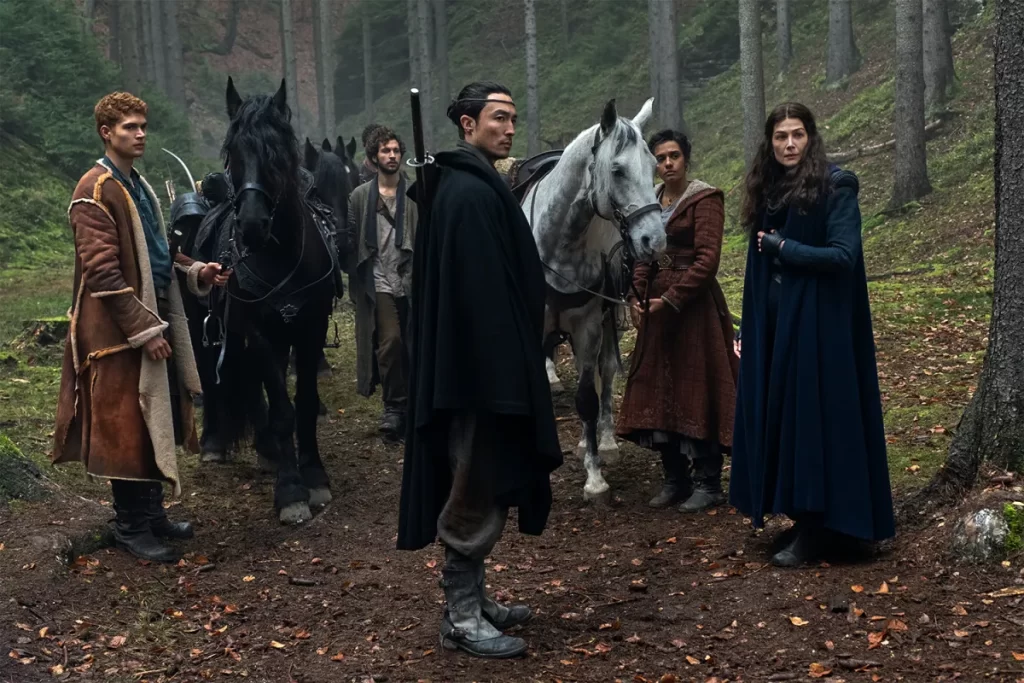 A friend and I have been watching The Wheel of Time adaptation on Amazon. Both of us expressed surprise not at the open casting, which we agree is wonderful, but at how that production choice plays out in small hamlets like Rand al’Thor’s “home town” of Two Rivers. After observing that every possible racial group is represented in this isolated, insular mountain community, my friend had an epiphany.
A friend and I have been watching The Wheel of Time adaptation on Amazon. Both of us expressed surprise not at the open casting, which we agree is wonderful, but at how that production choice plays out in small hamlets like Rand al’Thor’s “home town” of Two Rivers. After observing that every possible racial group is represented in this isolated, insular mountain community, my friend had an epiphany.
“I had to remind myself,” said my friend, “that if I suspend disbelief to accept that there’s magic in this world, then I might also have to suspend my disbelief in genetics.”
But isn’t it curious, how difficult this can be? The addition of magic in the Robert Jordan universe does not imply the generalized suspension of basic science, but the casting choices made in populating the Two Rivers absolutely does. Surely, under normal conditions, a group of people who initially look very different and then happily intermingle and intermarry over several generations would soon produce a population exhibiting mostly blended rather than outlying traits?
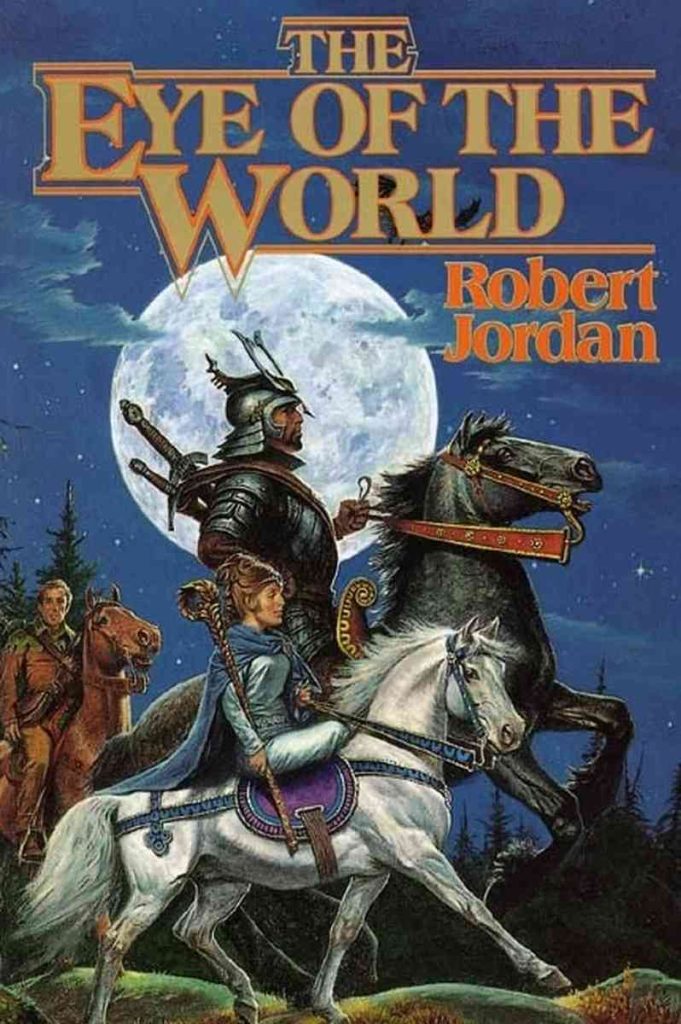 So, if genetics is getting tossed out the window, what’s next? Photosynthesis? The electron constant? Algebra?
So, if genetics is getting tossed out the window, what’s next? Photosynthesis? The electron constant? Algebra?
I once had a housemate who professed a hatred of musicals, both on stage and on film. He explained that he simply couldn’t get around the idea that when people feel a ton of emotion, they break into song. I thought (but did not quite say) that that’s exactly when people are most likely to spontaneously burst into song.
 Pro or con, musicals mark another instance where we either go along for the ride, suspending our disbelief when our heroes start warbling and trilling –– also when a brass band kicks in out of nowhere, playing (let’s say) “Seventy-Six Trombones”––or we cross our arms, huff and puff, and complain that musicals “aren’t realistic.”
Pro or con, musicals mark another instance where we either go along for the ride, suspending our disbelief when our heroes start warbling and trilling –– also when a brass band kicks in out of nowhere, playing (let’s say) “Seventy-Six Trombones”––or we cross our arms, huff and puff, and complain that musicals “aren’t realistic.”
But what is? Howard Shore’s exceptional score for The Lord of the Rings has nothing to do with realism. The Fellowship of the Ring is not accompanied on its journey by a traveling orchestra –– and if it were, wouldn’t we throw up our hands and declare the film to be entirely unbelievable?
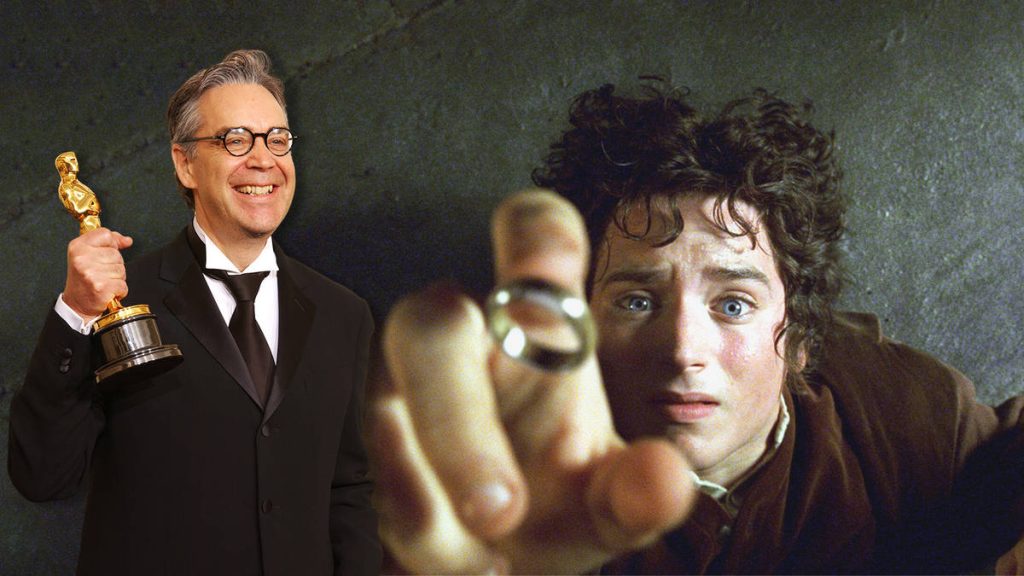 The easiest stunt to pull off when requiring readers or viewers to freeze-frame their disbelief is to offer up only a single element that’s not of this world. Lorrie Moore does exactly this in I Am Homeless if This is Not My Home (winner of the 2023 National Book Critics Circle Award) by asking us to accept that her hero’s deceased ex-girlfriend might want to embark on one final post-mortem road trip, bantering like a boss all the way. Everything else (well, almost everything else) is essentially normal, right down to the tarmac, the songs on the radio, and said girlfriend’s steady rate of decay.
The easiest stunt to pull off when requiring readers or viewers to freeze-frame their disbelief is to offer up only a single element that’s not of this world. Lorrie Moore does exactly this in I Am Homeless if This is Not My Home (winner of the 2023 National Book Critics Circle Award) by asking us to accept that her hero’s deceased ex-girlfriend might want to embark on one final post-mortem road trip, bantering like a boss all the way. Everything else (well, almost everything else) is essentially normal, right down to the tarmac, the songs on the radio, and said girlfriend’s steady rate of decay.
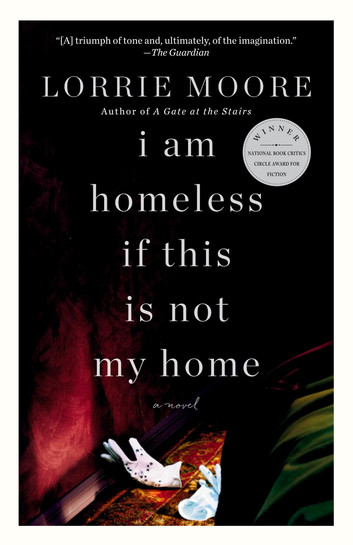 Sometimes, one encounters a writer who appears to be sticking to the world as it is, but elements of dream or otherness are allowed to intrude, often with unpredictable results. The reader is themselves suspended, learning with every new-turned paged to be watchful, wary of what is real and what is not. Kathleen Jennings takes this approach in Flyaway, where disbelief is not so much suspended as it is actively cultivated. John Crowley’s Little, Big proceeds in much the same fashion.
Sometimes, one encounters a writer who appears to be sticking to the world as it is, but elements of dream or otherness are allowed to intrude, often with unpredictable results. The reader is themselves suspended, learning with every new-turned paged to be watchful, wary of what is real and what is not. Kathleen Jennings takes this approach in Flyaway, where disbelief is not so much suspended as it is actively cultivated. John Crowley’s Little, Big proceeds in much the same fashion.
But in general, suspension of disbelief works best in an additive sense. The story-teller allows for some new power, something that piggy-backs on the world already known. For example, in The Fifth Season, N.K. Jemisin allows for “orogenes” who control stone, a supernatural power built on what we already accept of geology and plate tectonics. Similarly, in Marvel Comics lore, the character known as Storm can control wind and weather –– but her powers depend explicitly on phenomena with which we are already familiar.
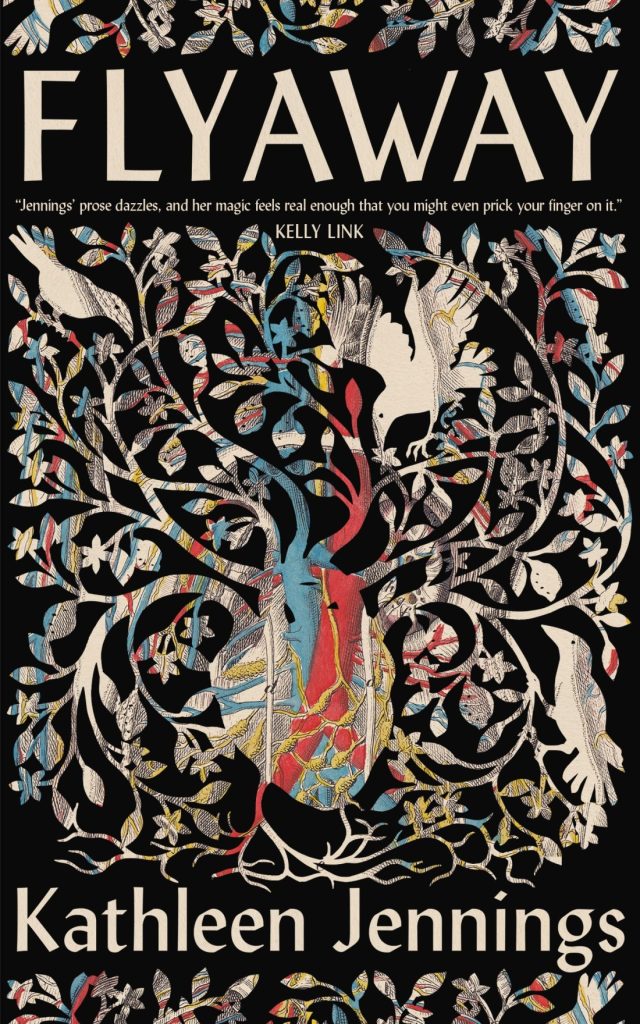 Even the finest works of the fantastic have their awkward moments. In HBO’s Game of Thrones, there’s a scene in which the Onion Knight, Ser Davos Seaworth, breaks young Gendry out of prison and sets him in a rowboat. When Gendry faces the wrong way, Ser Davos asks, “Have you ever been in a boat?” and Gendry answers, “No,” but the very next moment, he’s feathering the oars like a pro. All I can do is shake my head. Rowboats require practice: you’re facing the wrong way while steering, and each oar (long and heavy) functions independently. In the ocean, as Gendry is, every single wave impacts the oars differently. I’m forced to say that, as written, this charming, comic scene swan dives right over the cliff of believability. If poor Gendry has never rowed, all the royal blood in the world won’t help him. He’ll never get past the breakers, much less to the supposed safety of some far and distant shore.
Even the finest works of the fantastic have their awkward moments. In HBO’s Game of Thrones, there’s a scene in which the Onion Knight, Ser Davos Seaworth, breaks young Gendry out of prison and sets him in a rowboat. When Gendry faces the wrong way, Ser Davos asks, “Have you ever been in a boat?” and Gendry answers, “No,” but the very next moment, he’s feathering the oars like a pro. All I can do is shake my head. Rowboats require practice: you’re facing the wrong way while steering, and each oar (long and heavy) functions independently. In the ocean, as Gendry is, every single wave impacts the oars differently. I’m forced to say that, as written, this charming, comic scene swan dives right over the cliff of believability. If poor Gendry has never rowed, all the royal blood in the world won’t help him. He’ll never get past the breakers, much less to the supposed safety of some far and distant shore.
And yet, I’m perfectly happy to believe in three-eyed ravens and the faceless men of Bravos.
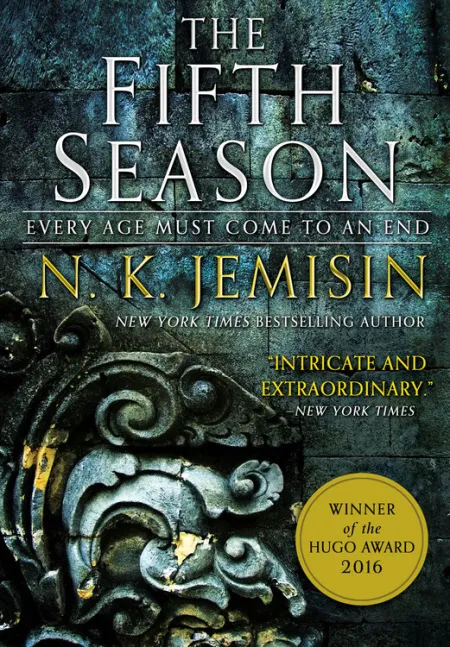 Perhaps the loftiest trick of all in the juggling game of disbelief is to remove some element that we have trouble imagining living without. Gravity, for example. The relative hardness and density of metal. Inertia. Strip away even one those three, and then try writing up a believable sword-fight. Good luck to ya’.
Perhaps the loftiest trick of all in the juggling game of disbelief is to remove some element that we have trouble imagining living without. Gravity, for example. The relative hardness and density of metal. Inertia. Strip away even one those three, and then try writing up a believable sword-fight. Good luck to ya’.
And this, perhaps, is why it is easier, when watching Amazon’s The Wheel of Time, to accept the One Power and way-gates and trollocs than it is to believe in a remote, mountainous outpost where the population covers just about every color of the human rainbow.
Magic, we buy (in part because it’s great fun to do so).
But reality?
Reality bites.
Onward.
Mark Rigney is a writer and long-time Black Gate blogger. His work on this site includes original fiction and perennially popular posts like “Adventures in Spellcraft: Rope Trick.” His new novel, Vinyl Wonderland, dropped on June 25th, 2024. Reviewer Rich Horton said of Vinyl Wonderland, “I was brought to tears, tears I trusted. A lovely work.” His favorite review quote so far comes from Instagram: “Holy crap on a cracker, it’s so good.” A preview post can be found HERE, while his website lives over THERE.
Spotlight on “The Will of the Many” by James Islington
In The Will of the Many, at the elite Catenan Academy, a young fugitive uncovers…
The post Spotlight on “The Will of the Many” by James Islington appeared first on LitStack.
Book Review: The Everlasting by Alex E. Harrow (by Swiff)

Book links: Tor Publishing Group | Goodreads
ABOUT THE AUTHOR: Alix E. Harrow is the Hugo Award winning author of The Ten Thousand Doors of January, The Once and Future Witches, and various short fiction. Her Fractured Fables series, beginning with the novella A Spindle Splintered, has been praised for its refreshing twist on familiar fairy tales. A former academic and adjunct, Harrow lives in Virginia with her husband and their two semi-feral kids.
Publisher: Tor Books (Expected October 2025)
Formats: Audiobook, ebook, paperback
REVIEW: The Everlasting is my favorite of Alix’s stories since the release of The Ten Thousand Doors of January. It is a love story told across a thousand years, again and again. It’s a story of ambition and ruthlessness, of bravery and cowardice, of servitude and freedom. It’s a lovely, emotional, and endearing read, showcasing Harrow’s wit and insightful observations common to her stories.
Told from an alternating second-person narrative (!) that echoes through time (!!), the story brings to mind Ken Grimwood’s classic Replay in all the best ways. Stories of this particular genre seem like they’d be especially difficult to execute, but Harrow does a remarkable job at harvesting all the seeds planted throughout the story.
I’m not going to divulge any further plot details as that would spoil some of the fun. Trust that the book is full of surprises and runs the full gamut of emotions, so prepare yourself for an immersive reading experience.
Sorry for cutting this short, but I have to go. If you need me, I’ll be waiting beneath the yew tree…
COVER REVEAL: God's Junk Drawer by Peter Clines (by Mihir Wanchoo)

Official Author Website
Pre-order God’s Junk Drawer over HERE
Read Fantasy Book Critic’s review of Ex-Heroes
Read Fantasy Book Critic's review of Ex-Patriots
Read Fantasy Book Critic’s review of Ex-Communication
Read Fantasy Book Critic's review of Ex-Purgatory
Read Fantasy Book Critic's review of Ex-Isle
Read Fantasy Book Critic's review of The Junkie Quatrain
Read Fantasy Book Critic's review of 14
Read Fantasy Book Critic's review of The FoldRead Fantasy Book Critic’s review of The Broken Room
Read Fantasy Book Critic Interview with Peter Clines
Read Fantasy Book Critic’s second interview with Peter Clines
Read I See Dead People by Peter Clines (Guest Post)
We are big fans of Peter Clines at Fantasy Book Critic and it's been a while since we have gotten to read some of Pete's fabulously twisted tales. So it is with great pleasure that we got news of the cover for God's Junk Drawer.
Peter's newest standalone book is being released by Blackstone Publishing on Nov. 11th 2025 and here's the snazzy cover for it featuring the talents of James T. Egan (Bookfly design).

Pre-order God’s Junk Drawer over HERE Add God's Junk Drawer on Goodreads
Official Book Blurb: Welcome to the Valley …
Forty years ago, the Gather family—James, his daughter Beau, and his son Billy—vanished during a whitewater rafting trip and were presumed dead.
Five years later, Billy reappeared on the far side of the world, telling an impossible tale of a primordial valley populated by dinosaurs, aliens, Neanderthals, and androids. Little Billy became the punchline of so very many jokes, until he finally faded from the public eye.
Now, a group of graduate astronomy students follow their professor, Noah Barnes, up a mountain for what they believe is a simple stargazing trip. But they’re about to travel a lot farther than they planned …
Noah—the now grown Billy Gather—has finally figured out how to get back to the Valley. Accidentally bringing his students along with him, he’s confident he can get everyone back home, safe and sound.
But the Valley is a puzzle—one it turns out Noah hasn''t figured out—and they’ll need to solve it together if there’s any chance of making it out alive.
Pulling from Earth’s past, future, and beyond, Peter Clines has created a complex, dangerous world, navigated by a dynamic ensemble cast, and a story that is thrilling as it is funny and heartfelt.
The Lost World
You may have heard about the recent statements made by Netflix CEO Ted Sarandos, a man who combines all the best qualities of Dr. Jack Kevorkian and Alaric the Goth in one natty package. As reported by Variety on April 28th, the streaming mogul declared that the precipitous decline in in-person movie attendance which began several years ago and has reached near-catastrophic proportions in the years following COVID is easily understandable; indeed, it communicates a clear message:
What does that say? What is the consumer trying to tell us? That they’d like to watch movies at home, thank you. The studios and the theaters are duking it out over trying to preserve this 45-day window that is completely out of step with the consumer experience of just loving a movie.
Relegating the theater experience that has defined the industry (to say nothing of wider American culture) for the past nine decades to the dustbin of history, Sarandos shined a dazzling light on our murky cultural landscape:
Folks grew up thinking, I want to make movies on a gigantic screen and have strangers watch them and to have them play in the theater for two months and people cry and sold-out shows… It’s an outdated concept.
Thank you, Ted, for clearing that up for us. I’m sure Scorsese and Coppola and Lee and Tarantino and Bigelow are happy to have the benefit of your sage counsel.
Lustily chomping his cigar and aggressively pounding his fist on the table (okay, I made that part up), the Netflix boss further said that the decline of movie theaters doesn’t “bother” him. He would be bothered, he added, if “people stop making great movies.”
Now I’ve seen the typical Netflix product, and you’ll forgive me if I think that Mr. Sarandos wouldn’t know a great movie if Bette Davis walked up with one in a steel film can and broke his nose with it.
 Fasten your seat belt, Ted — it’s going to be a bumpy night!
Fasten your seat belt, Ted — it’s going to be a bumpy night!
If you sense a certain bitterness in my remarks, you’re right, and that sourness stems less from my distaste for Mr. Sarandos and his cavalier attitude towards something that I love than from my suspicion that he’s right, damn it. Much as I might regret it, it does appear that the kind of moviegoing experience that many of us have taken for granted for our entire lives is rapidly — and probably irrecoverably — becoming a thing of the past.
Some hard-hearted realists might say that mourning the decline of moviegoing (as in actually going to the movies) is as silly, pointless, and socially and economically regressive as bemoaning the fact that the buggy-whip industry isn’t what it used to be.
As a practical matter, that might be so, but I still feel entitled to mourn the loss. Why?
To be moved, whether you are frightened or thrilled, brought to tears or to laughter, is an experience that you can certainly have in your living room, alone or with one or two other people, but that’s a fundamentally different experience than feeling those same emotions in a room filled with many other people, in a place dedicated (I almost said consecrated) to undistractedly watching the movie and nothing else, a unique space where no one (ideally) is chatting, looking at their phone, constantly moving around the room, or pausing the action while they stroll to the bathroom or go to the door to get the Grubhub order.
The darkness, the size of the space and the close physical proximity of so many other people, the scale of the screen and the depth of the sound, the sustained, even relentless nature of the experience (to say nothing of the fact that because you’re leaving the house to do it, it’s something that actually requires a degree of planning), and yes, the cash outlay — even if the movie itself is a negligible piece of fluff, these factors all combine to make the in-person experience itself larger and more weighty.
Of course, every difference I just mentioned is, for an increasing number of people, a bug and not a feature. In that, Ted Sarandos is right. More and more people do seem to prefer streaming at home over the older way of seeing movies. I know, I know, who has the time anymore? Who has the money? And what about the kids? Anyway, how many movies are good enough to warrant going through all the hassle?
I can’t argue with any of these objections; I feel their force myself. And yet I think we’re going to lose something precious if going to the movies becomes some sort of boutique experience limited to a few large urban areas. Sarandros himself pointed to this as a likely future, saying, “If you’re fortunate enough to live in Manhattan, and you can walk to a multiplex and see a movie, that’s fantastic. Most of the country cannot.” (I don’t know where Ted lives, but apparently he pictures the rest of the country as some sort of vast Hooterville where people wander among the cornstalks, desperate for entertainment.)
The “concept” dismissed as “outdated” by Ted Sarandos has played a major part in my life ever since I can remember. My parents loved movies and “going to the show” was one of my commonest experiences growing up; we literally did it all the time, and I continued to go on my own or with friends as I got older. I have countless memories connected with seeing movies in actual theaters or at the drive-in, and the record of my moviegoing forms a kind of alternate history of my life; it’s probably the same with you. Here are a few of my random moviegoing memories, and they’re all the more powerful because they’re not just mine; they’re collective memories shared in one way or another with the hundreds of people who were with me in the theater at those moments, and with the millions who experienced the same feelings when they saw the same movies in their own hometown theaters.
(You will notice that all of these movies are from the 60’s and 70’s. I have had memorable theater experiences in just about every decade of my life — Dead Ringers, anyone? — but these came to my mind first. Given my topic, it’s probably no surprise that I’m feeling excessively nostalgic right now.)
Summer, 1975. On vacation, visiting my cousins in Texas, we went to see something called Jaws. American movies and culture would never be the same. The shriek of delighted terror and terrified delight that burst from my fourteen-year-old mouth when that corpse’s head popped out of the submerged boat and scared the bejeezus out of Richard Dreyfuss, and me, and all the people surrounding me… well, I didn’t even hear myself, because my ears were too busy ringing from the identical sound that had just come from everyone else.
Quentin Tarantino has said that Jaws is the greatest movie (as opposed to the greatest film) ever made, because it delivers all those quintessential screaming/laughing movie pleasures more perfectly than anything else that’s ever been on the screen. If you were there in 1975, you can only agree with him.
Spring, 1979. My buddy Eddy’s mom said she would take us to the show to see a horror movie. She loved horror movies; she had already taken us to the drive-in to see The Brood and The Corpse Grinders. That’s what I call a great mom. When my mom (also a great mom) heard that Ruth was going, she said that she would join us. I told her that she really didn’t want to do that; the movie we were going to see was called Dawn of the Dead and it was not a Vincent Price campfest, which was what she was expecting from a horror movie. “You don’t understand, Mom — this movie has zombies that eat people!” She tsk-tsked me and insisted on coming along.
Five minutes in, in an apartment building infested with the living dead, a woman spots the shambling corpse of her husband; she runs up to him and embraces him, whereupon he takes a huge bite out of her neck as the blood gushes by the gallon. That woman was no more shocked than my mom, who grabbed her purse, stood up, and walked out of the theater. “I told you!” I shouted as she exited.
Spring, 1968. My mom gave me a day off from school. Why? She was going to drive me into Los Angeles so we could see 2001: A Space Odyssey at the fabled Cinerama Dome. (I told you she was a great mom.) She had told my teacher the day before that it would be “very educational.” The enormous curved Cinerama screen, the eye-popping special effects and overwhelming sound, the rapt enthrallment and utter bafflement of the audience — it has all stayed with me to this day.
As stunned people stood around on the sidewalk afterwards, there was a steady chorus of “What does it mean? Do you know what it means?” “I know what it means!” I recklessly piped up. As all those pairs of adult eyes focused on my seven-year-old self, I realized that I should have kept my big mouth shut. I didn’t know what the movie meant; I only knew that I had just had one of the greatest days of my life, and that I loved my mom.
Fall, 1979. At the Cinerama Dome again, my friend Sutton and I arrived at the last moment to see one of the first showings of Apocalypse Now, and the only seats left were in the first couple of rows. The Dome’s screen was eighty-six feet wide and thirty-two feet high; from our seats, it was like crouching at the foot of Mont Blanc. When the movie opened with a napalm strike, I felt like every millimeter of my optic nerves were on fire, and during the “Ride of the Valkyries” helicopter strike I crouched in my seat to keep from being eviscerated by a mortar round or decapitated by a helicopter blade, and I knew that everyone else in the theater was doing the same thing, even those who had more rational seats than we did (I told Sutton we should have left home earlier).
Every person in the audience knew that they were seeing something beyond the realm of the normal; we were witnesses to an outrageous, crazily ambitious, magnificent once-in-a-lifetime folly that no one there would ever forget. It was probably my supreme experience at the movies, and it wouldn’t surprise me if a lot of the people who were there that night almost forty-six years ago look back and think about it that way too.
One more. Fall, 1977. The movie is, believe it or not, Race for Your Life, Charlie Brown! This time Sutton and I left in plenty of time to get decent seats, and anyway, we didn’t have to drive as far to get to the theater. (The Cinerama Dome usually didn’t book Charlie Brown movies.) We had a Saturday with nothing to do and the only thing showing was this Peanuts movie. Well, why not? The theater was full to overflowing with kids — I didn’t see an adult in sight. We two high-school boys were apparently the oldest people present. Clearly this mediocre cartoon was a golden opportunity for parents to dump their spawn for a couple of hours and have a little time for… well, other stuff.
Things held fairly steady until the lights went down, and then pandemonium reigned. You’ve read Lord of the Flies? It was like that. The air was instantly full of flying popcorn boxes and other trash, and the soundtrack was drowned out by an insane cacophony of laughs, shrieks, yells, catcalls, arguments, profanities. You couldn’t see the movie; you couldn’t hear the movie. The aisles were filled with kids running up and down, falling, rolling, jumping, kicking, crashing. One kid sitting several rows forward took umbrage at something the urchin sitting directly in front of us said or did and came flying from his seat, and jumping astride the offender, pinned him in place and started whaling on him as the surrounding kids cheered; it was like having a ringside seat at Ali-Foreman. We were too stunned to intervene (others quickly did), and we bolted for freedom as soon as the final credits rolled, happy to escape with our lives, but I have never forgotten that kiddie matinee; it permanently darkened my view of human nature and blighted my belief in the possibility of building anything lastingly good in this world. And all it cost me was, what? Two bucks and a little gas money? Now that’s what I call a bargain.
Beat that, Ted Sarandos.
Thomas Parker is a native Southern Californian and a lifelong science fiction, fantasy, and mystery fan. When not corrupting the next generation as a fourth grade teacher, he collects Roger Corman movies, Silver Age comic books, Ace doubles, and despairing looks from his wife. His last article for us was Writ in Water: V.E. Schwab’s The Invisible Life of Addie LaRue
7 Author Shoutouts | Authors We Love To Recommend
Here are 7 Author Shoutouts for this week. Find your favorite author or discover an…
The post 7 Author Shoutouts | Authors We Love To Recommend appeared first on LitStack.
Get it While You Can: Manly Wade Wellman’s Cahena Going Out of Print
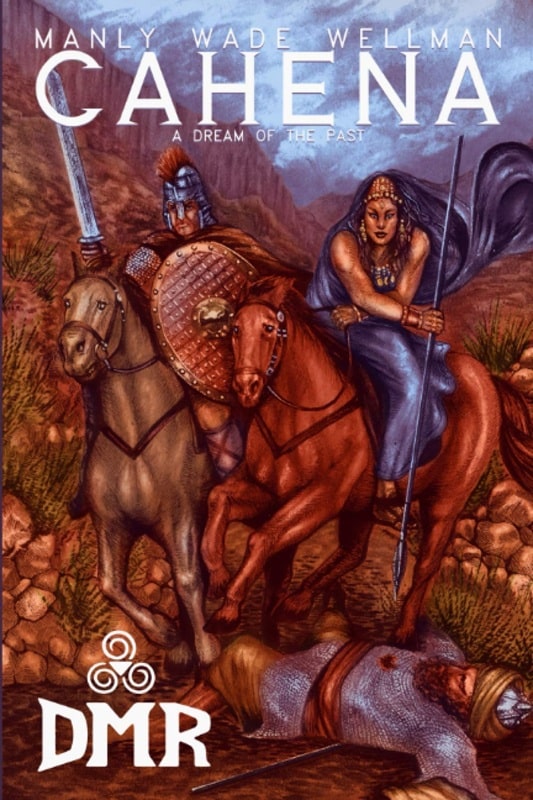
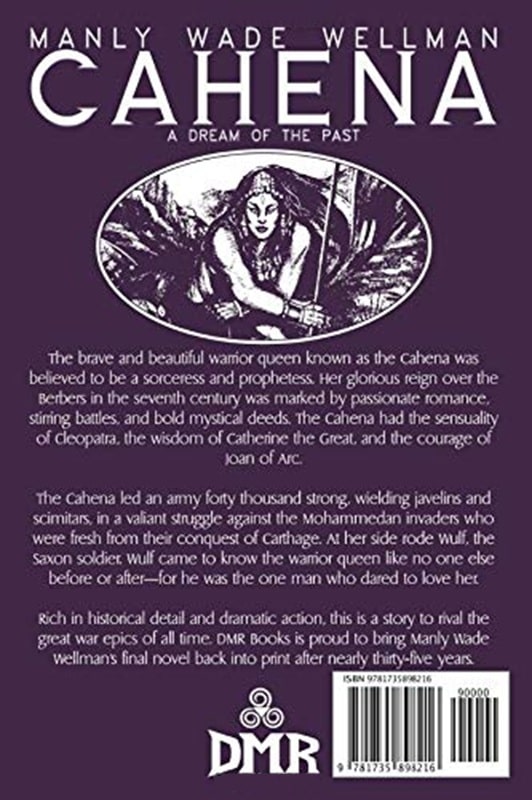
Cahena by Manly Wade Wellman (DMR Books, November 1, 2020). Cover by Lauren Gornik
I’m hearing reports that Manly Wade Wellman’s final novel Cahena, out of print for nearly 35 years until DMR released a handsome new edition in 2020 with a striking cover by Lauren Gornik, is on the verge of going out of print again.
Cahena is an overlooked gem in Wellman’s distinguished catalog. A historical novel with fantasy elements, it tells the tale of the legendary Berber queen who lived in the 7th Century in North Africa, and led her people against the Romans and later Muslim invaders. The Cahena, as she was known, was said to be both a sorceress and prophetess, and she led an army forty thousand strong in a valiant struggle to save her beleaguered people.
DMR’s rights to the book expire this month, and at the end of May it will not longer be available. Morgan Holmes says that with this final novel, “Wellman went out on top.” If you’re a Wellman fan, or a fan of quality adventure fiction, grab a copy while you can. Don’t wait another thirty-five years for the next reprint! Order directly from DMR Books here.
The Wycherleys (by Annaliese Avery)
Young Adult Fantasy / Romantasy
At the age of 17 Aurelia should be entering magical society and finding a match, but 150 years earlier her Mathilde Wycherley was cursed and since then the curse has travelled down through the generations…and it has landed on Aurelia. She is a pariah, not a single witch will join with her and without a “tether” her magic will fade away.
Jules Nightly is a descendent of the witch who cursed Mathilde but desperate times call for desperate measures and in an effort to hold onto her magic without a tether Aurelia enters into a forbidden bargain with him.
––––––––––––––––––––––––––––––––––––––––––––––––––––––––––––––––––––––––––––––
Fans of Morrigan Crow (The Tales of Morrigan Crow) or Leovander Loveage (Sorcery & Small Magics) will love this book. I hesitate to say this but it’s another book for the Harry Potter refugees. If you need a little magic in your life, this is your book.

The Writer and the Boycott
 Image by Niek Verlaan from Pixabay
Image by Niek Verlaan from Pixabay
Good afterevenmorn!
Well, I’m talking boycotts again, as there is a lot of it going around. And they are absolutely kicking up all kinds of dust. This is great – making your voice heard with the only thing these companies seem to understand; their bottom lines. It’s not so great if you’re an innocent writer just trying to make a living who happens to be caught in the crossfire.
Some few writers like myself are trying to divest from unethical companies (I’m not going to name them, but we all know, right?). But we are quite few, and it’s only, at least in my case, quite a light boycott. My books are still available on sites I’d rather no be on, as I want to offer something for those readers who have no choice but to use that site. That’s the unfortunate thing a near monopolies like this. Some folks have no other option. I do have my books available in other places, too, and encourage folks to buy there instead if they can.
It is an unfortunate truth that writers are largely stuck with these behemoth companies. Many self-published or small press authors make (or made) quite a decent living selling through these companies, sometimes exclusively. Good for them, honestly. That’s great! Less great now, however. Buyers, you see, are also boycotting these large companies. And that spells trouble for writers.
 Image by Лариса Мозговая from Pixabay
Image by Лариса Мозговая from Pixabay
I’ve seen more than one post on social media of writers reminding readers that these big companies don’t really feel their absence, but we writers absolutely do. And they’re not wrong. When people stop buying books from one of the largest sellers of books, the folks who depend on that site to sell feel it first and hardest.
It’s not a an easy spot to be in. I’m incredibly proud of everyone who are now putting their feet down and refusing to give money to sites, and the people behind these sites who are actively making the world a harder place to be in. I’m also feeling for those who were making their livings by selling on the very sites that people are actively avoiding. It’s a tough situation all around.
 Image by PDPics from Pixabay
Image by PDPics from Pixabay
Before we go on, I do want to make a giant caveat to what I’m about to say next. I don’t make a living selling books on these sites. I don’t make a living selling books period. I’m a terrible marketer, and perhaps a mediocre writer, so I don’t make a living selling books. I’d really like to, and perhaps one day I’ll get there, but I do not currently. I work full time and am scraping by without having to rely on book sales. Everything I say here will probably feel hollow for those who are currently suffering for those who are caught in this fight.
With that said, I remain firmly on the side of the boycotters. I am also boycotting as much as I can. Book purchases are now made at the bookstore nearest me. It’s not always convenient, but a half hour walk to the shop is something that I’m willing to do in order to avoid using these sites. I don’t think readers should be guilted into abandoning their causes. I do think it’s up to us as writers to try and adapt to the changing landscape. There are a couple of ways to do this. Probably more, but if I do more than two, I’ll be writing this forever.
 Do not put all your eggs in one basket.
Do not put all your eggs in one basket.Image by Gerald Friedrich from Pixabay
The most important thing I think writers can do currently is diversify
Some sites have huge incentives for exclusivity. Make them the only site your book can be purchases or read from, and you get a bigger cut of the profits. It can be incredibly enticing. If possibly, avoid that temptation and put your books up on multiple sites – including your own. There are a lot of ways to create an online shop and start selling direct. It does require a lot more marketing work, as discoverability is a huge issue here.
But I do know book shoppers often are exposed to the marketing of these big sites, and then go hunting to see if the author is selling direct. This is especially since folks are being much more selective about where they source their goods and with whom they spend their money.
There is a further downside, and that is how bestsellers are counted. Personal sales don’t usually count towards the numbers. But if you care more about earning a living than making lists, then it’s not that much of an issue.
Plus there are other bookselling sites where you can sell, and those numbers will count.

Another thing to consider is a subscription model. This isn’t instead of diversifying, but in addition to. For those who are unaware of what this model means, essentially, that people will pay a small amount monthly in exchange for some exclusive content. There are quite a few companies that offer this service (for a cut, of course). The two big ones that I’m aware of are Patreon and Ko-Fi.
For both of these sites, you can set the monthly amount, and even charge different amounts for increasingly awesome exclusive stuff. This tiered subscription can be set to whatever amounts you wish. I know some folks who have subscription tiers at $20.00 a month or more. If you like, you can limit the number of those subscriptions, so you’re not spending all your time trying to fulfill your subscription obligations instead of writing. So perhaps you have a tier at $50.00, in which you provide a monthly handwritten letter, and an automatic awesome loot box with every book release a month, but only two slots for that tier. So you don’t end up spending a tonne of money and time getting those book boxes together and writing letters. The great thing about this is that you can structure it whatever way you want.
I have a Ko-Fi page (obligatory link here. That felt icky. Let’s move swiftly on). I chose it because they also offer an online shop, which has the option of selling to the general public or to one or more of your subscription tiers exclusively, and even an option to accept commissions if you want.
I am very limited on time and ability, as I work full time, so I know I don’t have a lot of time to create for my subscribers. For that reason, I’ve set the monthly amount very low ($1.00), and have only one tier. Subscribers get exclusive blog posts. They will be the only ones able to purchase the special editions of my books, when I get the time to create them (a special edition of The Dying God & Other Stories is currently in the works, with a subscriber exclusive cover and five all new full-colour illustrations). They also have first read of any of the serials I write. They were the first to read The New Haven Incident, and will be the first to read The Bear when I’ve finished writing it. They also get free recipes when I make something I feel is worth sharing. And I’m aiming to offer them free calendar print-outs with original artwork each year. It’s not much, because I cannot yet abandon the office job. Perhaps one day I will be able to, and I can start offering more to my subscribers.
I really like the functionality of Ko-Fi, and now use it as my shop, saving me the costs of hosting my own on my website. Other people choose Patreon because it has other features they find more convenient. I am a fan of being able to set a post as exclusive for a time period of your choosing before it becomes public. You have to do that manually on Ko-Fi.
 Image by christian schwartz from Pixabay
Image by christian schwartz from Pixabay
This isn’t to say that doing either of these things will go well for a writer. I am evidence of that. I don’t sell many books, and I don’t have many subscribers. Fortunate, then, I have full-time work, or I’d be in real trouble. I know that not everyone is fortunate enough to be in that position.
It’s a difficult journey, this writing thing, and should not be embarked on lightly. Boycotts are not making it any easier. We must muddle through as best we can in the weird, unstable world we find ourselves in. The important thing is not to give up. We need stories, perhaps now more than ever. So keep trying to find your way through. I’m here cheering you on. We can do it.
When S.M. Carrière isn’t brutally killing your favorite characters, she spends her time teaching martial arts, live streaming video games, and cuddling her cat. In other words, she spends her time teaching others to kill, streaming her digital kills, and a cuddling furry murderer. Her most recent titles include Daughters of Britain, Skylark and Human. Her serial The New Haven Incident is free and goes up every Friday on her blog.
Book review: Esperance by Adam Oyebanji

Book links: Amazon, Goodreads
ABOUT THE AUTHOR: Adam Oyebanji was born in Coatbridge, in the West of Scotland, and is now in Edinburgh, by way of Birmingham, London, Lagos, Nigeria, Chicago, Pittsburgh and New York. After graduating from Birmingham University and Harvard Law School, he worked as a barrister, before moving to New York to work in counter-terrorist financing in Wall Street, helping to choke off the money supply that builds weapons of mass destruction, narcotics empires and human trafficking networks. His first novel, Braking Day, was a finalist for the Canopus Award.
Publisher: DAW (May 20, 2025) Length: 432 pages (Kindle edition) Formats: Audiobook, ebook, paperback
Esperance hooked me from page one and didn’t let go. I mean, how could it? It opens with an impossible murder - a father and son drown in seawater inside their 20th-floor Chicago apartment (with no water tank around, floors dry, and nail scratches on the ceiling). A dead barracuda is just lying there next to them. For me, that’s the kind of opening that demands attention, and trust me, Oyebanji knows exactly how to keep it.
All of this somehow ties to a woman in Bristol who dresses and speaks like she walked out of the 1930s Nigeria, has and builds tech that shouldn’t exist, and is on a very specific historical scavenger hunt. Yeah, I’m in.
The pacing is perfect - the short chapters told from two points of view (Detective Ethan Krol and Abi) fly by quickly thanks to the right mix of action, mystery, and those oh-crap moments where everything shifts. The sci-fi elements are there, but Oyebanji doesn’t over-explain them, which somehow makes them even cooler. I found the twists top-tier, but your mileage may vary. Anyway, just when I thought I had things figured out, nope. With that said, it’s possible some readers won’t be crazy about police procedural elements, but since I love them, I had no issues here.
I also loved the dynamic between Hollie and Abi. Hollie is basically most of us. Abidemi, on the other hand, is an enigma - charismatic, dangerous, and inhumanly brilliant. Their relationship had the odd but interesting energy, and I loved how their interactions went from trust and suspicion and back.
Even the antagonist had motivations that actually made sense. There’s logic to their actions, even if their methods are, let’s say, a lot.
By the time I hit the final act, I was all in. The twists come fast, the revelations hit hard, and the ending is equally satisfying and unsettling. I feel it’ll stick with me. If you’re into Blake Crouch-style thrillers, Neal Stephenson-esque tech mysteries, or just a smart, fast-paced story that refuses to be predictable, Esperance is absolutely worth your time.
THE MARTIAN CONTINGENCY by Mary Robinette Kowal (Lady Astronaut #4)
Book Review: The Devils by Joe Abercrombie
I received a review copy from the publisher. This does not affect the contents of my review and all opinions are my own.
Mogsy’s Rating: 3.5 of 5 stars
Genre: Fantasy
Series: Book 1 of The Devils
Publisher: Tor Books | Macmillan Audio (May 13, 2025)
Length: 576 pages
Author Information: Website | Twitter
I feel like I read a different book than everyone else. Despite the raving reviews for Joe Abercrombie’s The Devils, I personally walked away with far more fixed feelings than I expected. Don’t get me wrong—there’s plenty to admire in this irreverent dark fantasy adventure, and as a longtime fan of the author, I was happy with the colorful cast of memorable characters and the gloriously brutal action. That said, something didn’t quite click in place for me. As folks tend to say, I liked it, but I didn’t love it.
Set in an alternate version of what feels like medieval Europe, the book opens on a politically tumultuous time. Brother Diaz is a devout yet somewhat sheltered monk who suddenly finds himself appointed to lead the Chapel of Holy Expediency, a secret taskforce comprised of convicted supernatural beings bound to serve the Church whenever their special talents are required. And right now is one of those times. The mission? A young street urchin named Alex, believed to be the long-lost heir to the throne of Troy, must be safely escorted across a war-torn landscape to her rightful place as Empress so she can unite the fractured church before the whole world burns down around them.
The crew of condemned misfits include Jakob, a centuries-old immortal driven by a stoic dedication to the task at hand; Sunny, a mild-mannered elf whose people may be waging a war against the empire, yet manages to remain hopeful in a world that fears her kind; Vigga, a fierce and uninhibited werewolf whose volatile nature makes her both the muscle and the loose cannon on the team; Baron Rikard, an ancient vampire whose taste for decorum never fails to add a touch of civility even as the group storms its way across the continent, leaving chao in their wake; Baptiste, a slick rogue with a jack-of-all-trades skillset, bringing versatility to whatever task needs doing; and Bathazar, a cantankerous necromancer who can get on everyone’s nerves, but whose deep knowledge of all things arcane proves nothing short of invaluable.
Let’s start with what worked for me, because to be fair there was plenty. First, in true Abercrombie fashion, the characters here were all fantastic and delightfully over-the-top, with group dynamics clearly mirroring the key roles in a heist crew. What makes it even better is that each member draws inspiration from classic horror archetypes, which is especially obvious when it comes to characters like Vigga and her impulse control issues, or the very gentlemanly Baron Rikard. Each one also brings something unique to the table, whether it’s magic, brute force, or just pure charm.
However, all this does come with a caveat. For although the Devils are arguably the stars of this show, for me it’s the “normies” Alex and Brother Diaz who form the heart and soul of the novel, because they are the only ones not defined by familiar archetypes or playing to expectations. Like many ensemble cast stories, The Devils prioritizes leveraging group dynamics for the sake of punchy banter and gallows humor, glossing over genuine and meaningful character development. Maybe this is simply Abercrombie trying new things, and I certainly don’t begrudge him for it, but this shift is noticeably different from his earlier works like The First Law trilogy.
I was also slightly underwhelmed with the book’s middle section. While the first few chapters blew me away with a near-perfect introduction into our characters, the conflict, and the quest, this momentum proved unsustainable. The pacing began to lag, making it feel as though the story was treading water as it saved the best it had to offer for climax and conclusion. Granted, character interactions kept things engaging, but there was no longer that sense of urgency or excitement which fueled the opening act. Perhaps what the plot needed was more engaging side quests, but instead it relied too heavily upon snappy dialogue and kinetic action to carry it through to the final stretch. Paradoxically, even though Abercrombie is still the king when it comes to writing tight, brutal, heart pounding and adrenaline pumping battle sequences, the more of them we got, the more the pacing felt largely static.
In the end, The Devils is an entertaining ride, delivering an action-packed fantasy romp with a killer cast of characters and Joe Abercrombie’s signature dark, sardonic wit. It’s undeniably entertaining, and I admire the author’s willingness to cut loose—after all, this is easily the most popcorny book I’ve read from him yet. However, even after the explosive, mayhem-filled finale, I still found myself curiously ambivalent, my feelings tempered by issues like unbalanced pacing and an inability to invest in the story emotionally. Bottom line, this is by no means a bad book, but ultimately, it also wasn’t quite what I thought I was signing up for.
![]()
![]()
Review of The River Has Roots by Amal El-Mohtar
When I first heard about The River Has Roots, I was simultaneously intrigued by it and hesitant to read it. The idea of a story about Faerie and sisters based on a murder ballad appealed to me, but my only previous experience with Amal El-Mohtar’s work was a sample from the novella she co-authored, This Is How You Lose the Time War—a book that for all its awards and accolades has now failed to draw me in and demand I […]
The post Review of The River Has Roots by Amal El-Mohtar first appeared on Fantasy Cafe.Spotlight on “Midnight at the Cinema Palace” by Christopher Tradowsky
Midnight at the Cinema Palace is a tender, exuberant debut novel about a young man…
The post Spotlight on “Midnight at the Cinema Palace” by Christopher Tradowsky appeared first on LitStack.
The Public Life of Sherlock Holmes: 52 Weeks: 52 Sherlock Holmes Novels – Kurland’s The Infernal Device
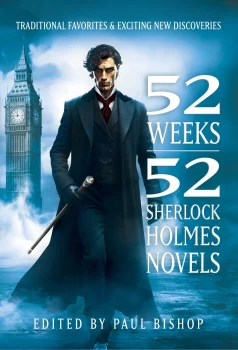 So, Paul Bishop is a friend of mine, and he wrote the very first post in Black Gate’s award-nominated Discovering Robert E. Howard. He talked about Howard’s boxing stories. Before those Pulps dried up, Howard wrote prolifically for them, with Sailor Steve Costigan his most popular creation.
So, Paul Bishop is a friend of mine, and he wrote the very first post in Black Gate’s award-nominated Discovering Robert E. Howard. He talked about Howard’s boxing stories. Before those Pulps dried up, Howard wrote prolifically for them, with Sailor Steve Costigan his most popular creation.
Paul is a major Westerns guy, and with Scott Harris, he put together 52 Weeks: 52 Western Novels, in which a slew of folks wrote about their favorite Westerns. It’s a cool format, and 52 Weeks: 52 Western Movies, and 52 Weeks: 52 TV Westerns, followed. The ’52’ number flows nicely with reading one a week, right? I have read the Novels, and Movies, books, and I think they’re cool for Westerns fans.
Paul reached out to me last year, and asked if I was interested in contributing a chapter to a 52 Weeks: 52 Sherlock Holmes Novels, project. Write about a non-Doyle pastiche? Heck yeah!!! In the end, I wrote four of them, so I’ve got a good 7.6% of the reviews. I covered Hugh Ashton’s The Death of Cardinal Tosca; John Gardner’s The Return of Moriarty; Michael Kurland’s The Infernal Device: and Frank Thomas’ Sherlock Holmes & The Sacred Sword.
We all followed the same format; well, we were supposed to. I know I did. So, to help promote this cool book, which came out last Friday (paperback and digital), here’s the first of the four I wrote. I’ve long been a fan of Kurland’s Moriarty books, and this is where it all started for me with him. Enjoy!
THE INFERNAL DEVICE
Michael Kurland
Published 1978
Contributor – Bob Byrne
BOOK FACTS
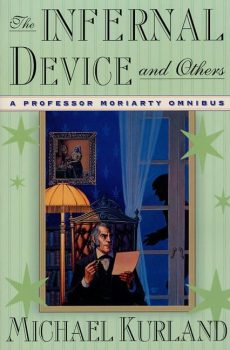 Version 1.0.0
Version 1.0.0
James Moriarty is THE great villain of the Canon. Until financial considerations caused Arthur Conan Doyle to do some revisionist history, Moriarty was the man who killed Sherlock Holmes. The Professor has become a popular character in Holmes pastiches, with novels and entire short story collections dedicated to him.
It’s no surprise that it’s fun to flesh out the character: There are untold possibilities. Elsewhere in this book, I wrote about John Gardner’s The Return of Moriarty, with the professor being a Victorian Era Mafia Don, with a crime family doing his bidding.
Michael Kurland’s Moriarty is a scientist, always looking to solve nature’s mysteries. He undertakes criminal enterprises to pay the bills, as it were. He doesn’t search out crimes – people come to him and he decides whether or not to take on the job. Moriarty isn’t a spider at the center of a web of all London’s crimes, though Sherlock Holmes is (wrongly) obsessed with him. We learn that Moriarty was Holmes’ math tutor, but their different paths set Holmes after him.
The stories are told from the perspective of an American journalist named Barnett, who Moriarty frees from a Turkish prison (he was framed for murder) in exchange for two years of employment. Barnett runs a news service, selling local British and European news to American newspapers. The information he gathers is useful in his role as Moriarty’s assistant.
Holmes unsuccessfully tries to pin a kidnapping on Moriarty, but eventually teams up with him to stop an attempt on the Queen’s life. The ‘infernal device’ is a prototype weapon of destruction, and hot air balloons play a key role. Reminds of me of the recurring theme of ‘The coming thing’ from The Adventures of Brisco County, Jr..
Kurland writes a good Holmes, and his Moriarty is an interesting character. No saint, but not a devil, either. The follow-up novel, Death by Gaslight, is at least as good, and the Moriarty series got off to strong start.
AUTHOR FACTS
Kurland has written five Moriarty books, as well as four novella/short stories. He also wrote two Lord Darcy novels after the original author, Randall Garrett, passed away. Kurland is active on Facebook.
BEYOND THE FACTS
Before the turn of the century, Holmes pastiches were not easily available, like they are now. Self-publishing, and online booksellers, weren’t common. The Doyle Estate had more influence/rights over the Holmes copyright. The Infernal Device (1978) was followed in 1982 by Death by Gaslight. They were hard to find after the initial printing, though. In 2001, Kurland wrote a new short story, “The Paradol Paradox,” and his three Moriarty titles were issued as one book: The Infernal Device and Others (A Professor Moriarty Omnibus). That same year, a new novel, The Great Game, came out. Kurland’s Moriarty stories have been readily available since then.
FUN FACT
One of the great joys of being a Sherlockian is speculating on the ‘untold tales’ which Watson mentions. In “A Scandal in Bohemia,” he tells that Holmes had been summoned to Odessa (Russia) ‘in the case of the Trepoff murder.’ Trepoff is the villain in this first Moriarty tale.
MOVIE FACTS
There have been no on-screen (or radio, that I’m aware of) adaptations of Kurland’s books. Moriarty, of course, has appeared many, many times. Ernest Maupain played the Professor opposite William Gillette’s Holmes when the great actor filmed his famous play, in 1916. I like Eric Porter, in Jeremy Brett’s Granada series. Lyn Harding played the two great villains of the Holmes Canon. He was twice a Moriarty, facing off against Arthur Wontner’s classic Holmes. But before that, on screen and stage, he was the terrible Grimesby Rylott (Raymond Massey, Jeremy Brett’s future father-in-law, was Holmes on screen), in The Speckled Band.
FAVORITE QUOTE
“It’s hard, almost impossible, properly to verbalize the complicated and complex chain of interrelated data that allows a genius to arrive at the correct inductive answer,” Moriarty said.

Bob Byrne’s ‘A (Black) Gat in the Hand’ made its Black Gate debut in 2018 and has returned every summer since.
His ‘The Public Life of Sherlock Holmes’ column ran every Monday morning at Black Gate from March, 2014 through March, 2017. And he irregularly posts on Rex Stout’s gargantuan detective in ‘Nero Wolfe’s Brownstone.’ He is a member of the Praed Street Irregulars, founded www.SolarPons.com (the only website dedicated to the ‘Sherlock Holmes of Praed Street’).
He organized Black Gate’s award-nominated ‘Discovering Robert E. Howard’ series, as well as the award-winning ‘Hither Came Conan’ series. Which is now part of THE Definitive guide to Conan. He also organized 2023’s ‘Talking Tolkien.’
He has contributed stories to The MX Book of New Sherlock Holmes Stories — Parts III, IV, V, VI, XXI, and XXXIII.
He has written introductions for Steeger Books, and appeared in several magazines, including Black Mask, Sherlock Holmes Mystery Magazine, The Strand Magazine, and Sherlock Magazine.
You can definitely ‘experience the Bobness’ at Jason Waltz’s ’24? in 42′ podcast.
Belated Movie Review #9: Corey Feldman’s The Birthday
The Birthday (Arcadia Motion Pictures, November 10, 2006)
What are you doing right now? Whatever it is, stop it. Stop it and watch the Corey Feldmen vehicle The Birthday. Watch it. Right! Damn! Now!
“Woah, Simmons,” you may be saying to yourself. “Where’s the fire? What’s the rush?”
The rush is twofold. Fold First — while this is a belated movie review, it isn’t my fault that it is so late! We are lucky that this move is viewable at all. Forces, dark forces, have tried to keep The Birthday down, to keep you, the peoples, from seeing it.
Second Fold. How can I say this… I’m a man of a certain age, I don’t usually get fired up about movies anymore. Some of my generation get bees in their bonnets and burrs ‘neath their saddles with remakes and reboots and whatever. Myself? I have a very zen-like attitude toward the whole thing. Hollywood made movies for me for like 40 years. It would be poor form to ask for more.
That said, in the early 90s it seemed that Hollywood was pulling movies straight from my subconscious. Robert Sarandon starring in The Resurrected, and the Fred Ward powerhouse To Cast A Deadly Spell. The former being a stab at filming Lovecraft’s “The Case of Charles Dexter Ward,” the second a Lovecraftian 40s noir comedy — yes, please! And I’m not casting any shade at its sequel, Dennis Hopper and Julian Sands’ Witchhunt. My friends, Tremors was like putting a quarter in a slot machine and winning $100!
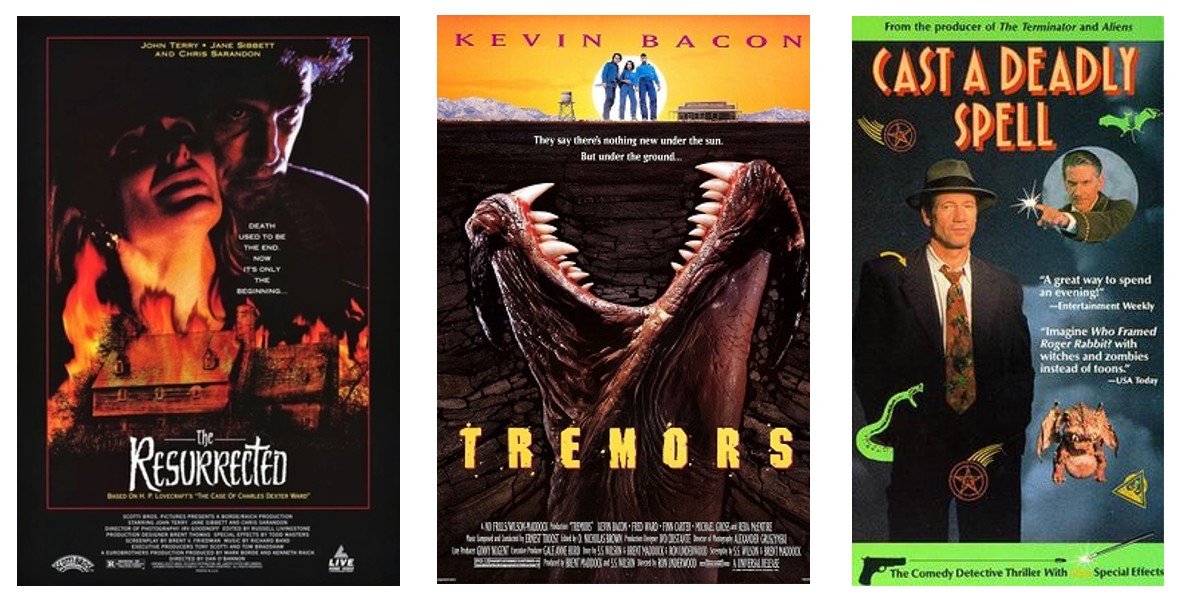 Another Holy Trinity!
Another Holy Trinity!
The Birthday falls into that kind of thing. A guy walks into the wrong damn place at the wrong damn time and things spiral out of hand. Way out of hand.
Feldman’s Norman Forrest is a decent guy, but he’s a schlub: nervous, nasal-y, and he’s trying his best to put on a brave face at his girlfriend’s father’s birthday party. These are not his people; they are wealthy (her father owns a string of hotels — including the venue for the party), his girlfriend has just gotten back from a trip to Europe — a long one it would appear.
Norman is trying to make his feelings for her known, but he’s constantly getting sidetracked. Last minute party issues, the fact some of his high school friends are having a corporate party on another floor, and then, well, there is something really weird going on in the background of the hotel. The wait staff, the cooks, something, several somethings, are going on.
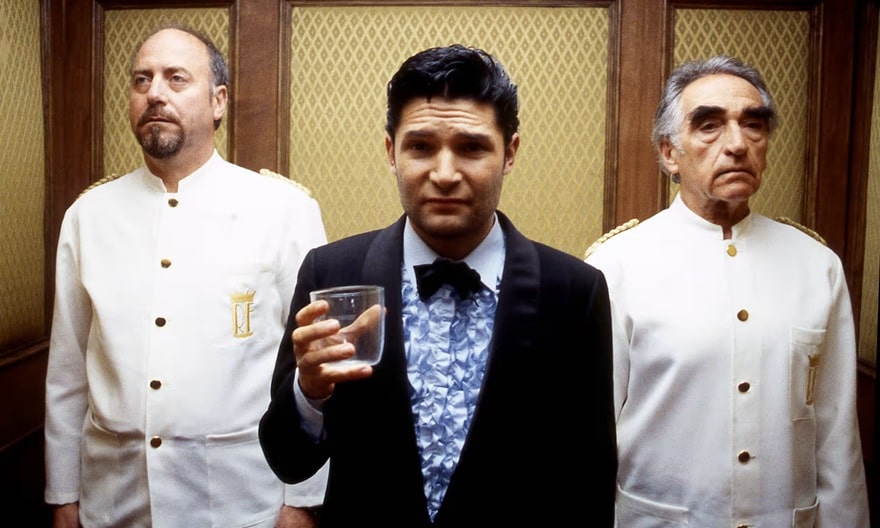 There’s something weird going on in the hotel
There’s something weird going on in the hotel
Cults? Secret Agencies? Murder in the sub-basement? A hero needs to step forth, and lord help us, the only guy who even matches that description is certainly not Norman Forrest. The hero that steps forth is Theodore, who claims to a secret agent, the point of the spear of a… well, a counter-cult maybe? But he can’t do much on his own and Lord help us, the only person he can rely on is Norman Forrest. But then, Theodore may be so crazy that in reality he’s the real threat.
Norman is a lot of things, but he’s not a fool. He’s open minded enough to ask questions, but not so open-minded that his brain’s gonna fall out, or that he’s going to let someone fill it with nonsense. But he’s in one of those situations where, by the time you get the proof you really need, it may well be too late.
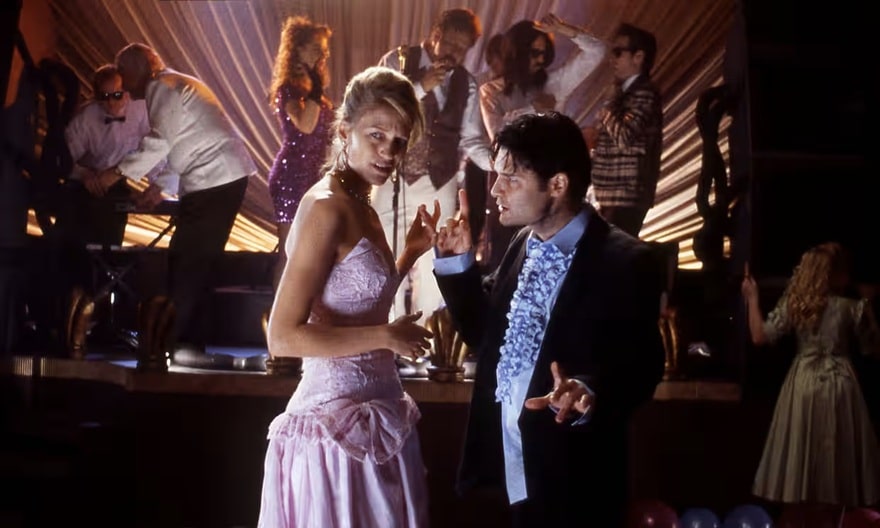 Erica Prior and Corey Feldman in The Birthday
Erica Prior and Corey Feldman in The Birthday
I only heard about the movie because one of my lefty-liberal websites had an interview with Feldman discussing it:
That is what that experience is with Norman. He has his high school buddy [Vince] around and he remembers being a kid and talking about girls in the locker room. There was a time when Norman wasn’t so neurotic. But maybe he also felt he wasn’t the best athlete and didn’t fit in because he didn’t like taking a shower with all the guys. I put him back in his school days whenever he interacted with his friend Vince. Juxtaposing that with this Indiana Jones character, Theodore, who may be a kook or savior. Is Theodore out of his mind and wandering in here with this fantasy, or is he really there because there is something going on, and this is Norman’s calling? Is Norman going to warn everyone there’s a crazy person running around the hotel, or is he going to believe this guy and take his gun and go on this adventure too? There is a whole side Norman develops that he didn’t know existed.
The movie is claustrophobic and at times muddy, but then if you’ve ever been stuck in a building with multiple parties and conflicting goals, you know that it can feel tight and muddled.
Check it out!
Adrian Simmons is an editor for Heroic Fantasy Quarterly, check out their Best-of Volume 4 Anthology, or support them on Patreon!
“The Ashtrays are Full and the Glasses are Empty” by Kirsten Mickelwait
The Ashtrays are Full and the Glasses are Empty is a star-studded novel based on…
The post “The Ashtrays are Full and the Glasses are Empty” by Kirsten Mickelwait appeared first on LitStack.
Tubi Dive, Part VI
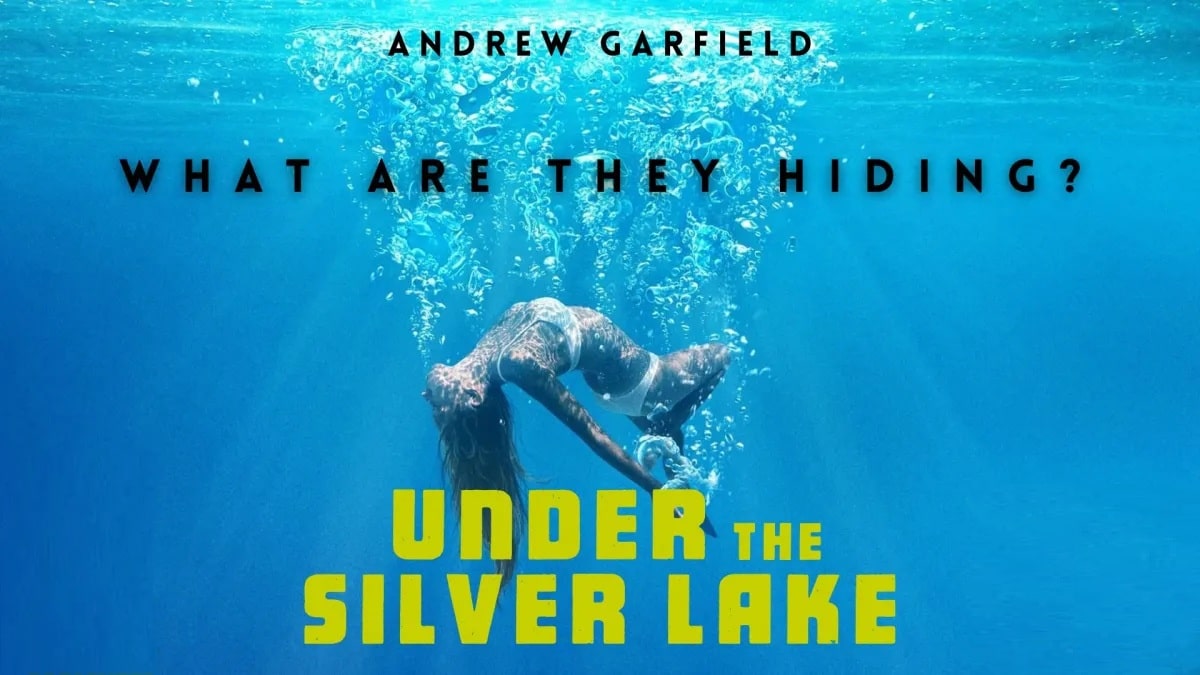 Under the Silver Lake (A24, April 19, 2019)
Under the Silver Lake (A24, April 19, 2019)
50 films that I dug up on Tubi.
Enjoy!
Under the Silver Lake (2018)Just in case you’re getting the wrong impression, Tubi isn’t all hidden schlock from around the world, there’s actually some proper* movies on there too.
Under the Silver Lake is the follow-up film from It Follows director David Robert Mitchell, and it seems the suits loved his horror film so much that they gave him free rein to do whatever he wanted to do.
What Mitchell wanted to do was make a two-hour, surreal, ‘slacker-noir’ type mystery film, with plenty of sex, violence, conspiracy theories and Andrew Garfield’s bottom.
I’m acutely aware that this is one of those films that sharply divides its audience. Some will bemoan the two hours they just lost on something they don’t understand, while others will wallow in its dreamlike narrative and unhinged tangents. I loved it.
Garfield plays a 30-something man who sits around doing nothing except smoke and watch his topless neighbour feed her parrots. When he falls for another neighbour his life is turned upside down, and leads him on a wild trail of hobo codes, murder, mysterious maps, secret codes, the truth behind pop culture, an urban legend, and a possible dog killer. Garfield is excellent as he drifts in and out of every scenario, looking increasingly worn down with each new revelation, and the supporting cast (mostly made up of attractive women there to feed his pervy addictions) are all great.
This was one of those films that drew me in and carried me along — I’ve seen comparisons to Mulholland Drive, but for me it felt like watching Mystery Train or Exotica for the first time.
Wonderful stuff.
10/10
*Proper to some. Everything I watch on there is proper.
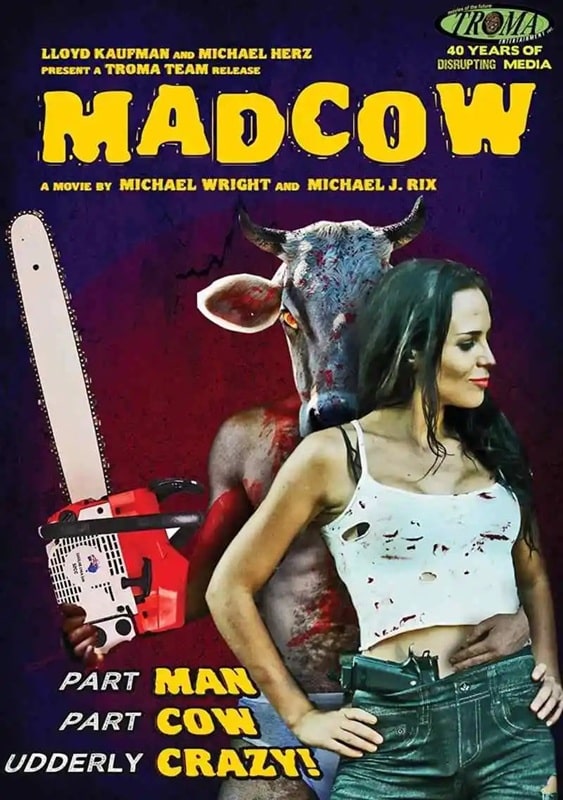
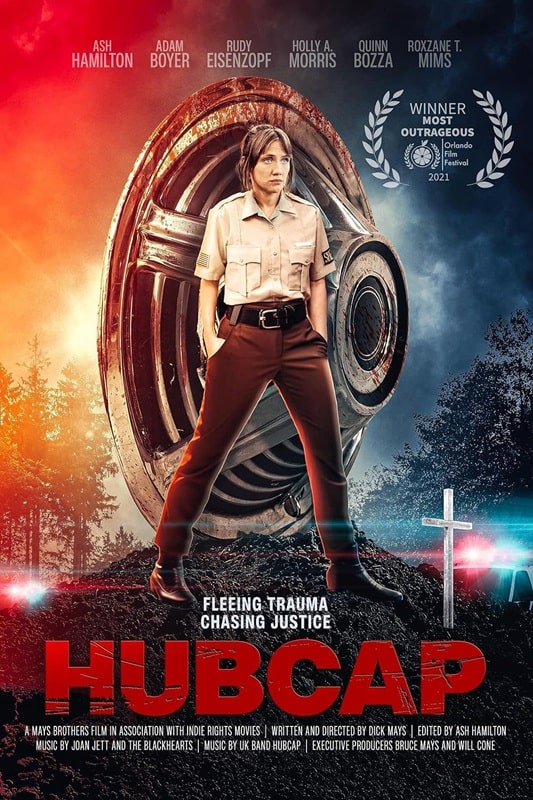
Mad Cow (Troma Entertainment, 2010) and Hubcap (Hubcap Film, 2021)
Watched a couple of sensible films recently, so I had to find a palate cleanser, and a Troma film usually does the trick.
Not strictly a Troma production (this was made by Funny How Films), Mad Cow was shot on a shoestring budget in 12 days (it shows), and is billed as more of a comedy than a horror film.
The story, for what it’s worth, concerns a scientist who transplants a cow’s head onto a human body. Said beastie then grabs a chainsaw and hilarity ensues. Actually, no it doesn’t. The deeply self-referential script is childish at best, deeply homophobic at worst, and I think I laughed twice at the Zucker Brothers-lite attempt at humor.
The funniest part might have been when I recognized most of the music as being stuff I had used myself for my student films, and when Kevin MacLeod’s name popped up in the end credits the film got a third titter out of me. So well done, I guess?
4/10
Hubcap (2021)Hoping for a spiritual successor to Quentin Dupieux’s Rubber (which I love), I settled down for this slice of road rage, and soon got, ahem, tired.
It’s a story of abusive relationships, PTSD, and political shenanigans, all tied together by a sentient hubcap possessed by the vengeful spirit of a war veteran.
What could have been highly silly, and somewhat enjoyable, becomes a bit of a slog from the midpoint once the main baddie has been dispatched and the hubcap stops its killing spree.
Oh well, plenty more fish* in the sea**.
4/10
* daft and gory films
** on Tubi
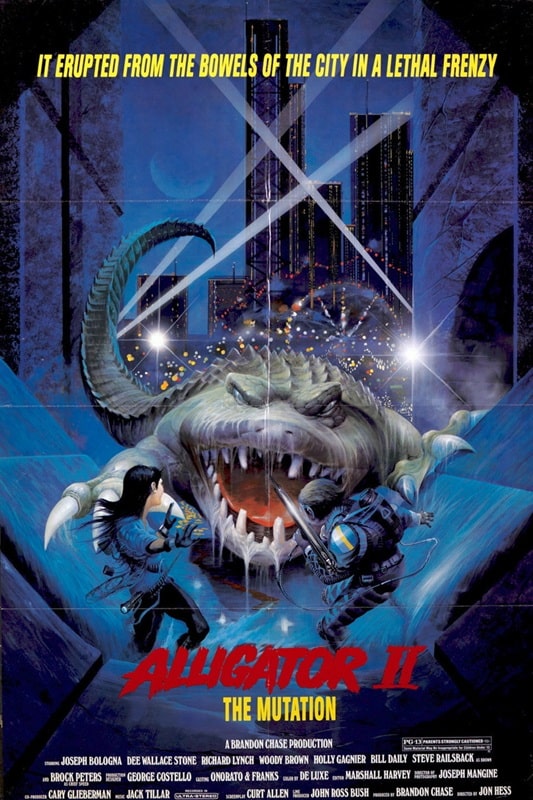

Alligator 2: The Mutation (New Line Cinema, June 5, 1991) and Vampire Clay (King Records, 2017)
Now then, I made a soft and slow rule that all the films I do these rubbish reviews for are first time watches, and yet I really think I’ve seen this one before. However, all I have is a sketchy memory of Richard Lynch in an underground alligator nest, so I can only assume that I caught a snippet one day on TV, or was very drunk at the time. Either way, here we are.
The first Alligator is awesome, but this one comes nowhere near to recapturing that magic. Instead we get another Jaws rehash with one-dimensional characters and dull kills. Joe Bologna is fine as the spiky detective who ain’t gonna follow the rules, but he’s no Robert Forster, and it’s fun to see Dee Wallace and Steve Railsback. The titular beastie is hardly a mutation though (just larger than normal).
They keep it light-hearted and there’s a couple of fun set pieces, but on the whole it’s a bit soggy.
5/10
Vampire Clay (2017)This is the feature-length debut of Sôichi Umezawa, who was responsible for the stop-motion insanity that was ‘Y’ in The ABCs of Death, so naturally I was quite excited.
The premise is great — a lump of clay is possessed by a disgruntled artist, which then goes on a blood-sucking spree when resurrected by an art student. The clay just needs moisture, any moisture, to reconstitute itself, and it dispatches art students and a hamster in a variety of slippery ways. Lurking in the background of this nuttiness is a commentary on modern art attitudes, a smattering of jealousy, and a dash of redemption, but we didn’t come here for drama and lectures. We came here for vampire clay.
Unfortunately, Umezawa is a way better short-form director, because this was unforgivably dull. The animatronic rubber and stop-mo effects were plentiful, but lit and shot so badly that they had no real impact, which was a pity. He does allow himself a gloopy animated sequence at the end (which really reminded me of a film I made about earwax a while ago), and the final clay creature is terrifyingly cute, but I was ultimately a little disappointed at what might have been. Oh well.
5/10
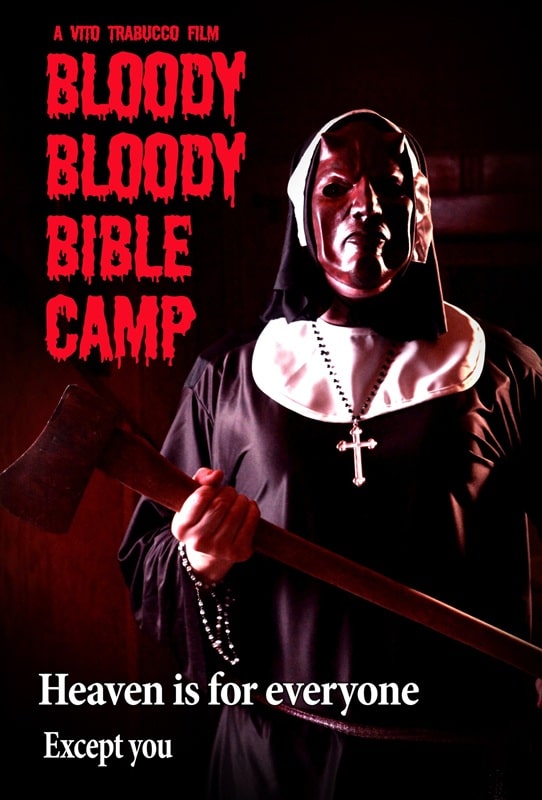
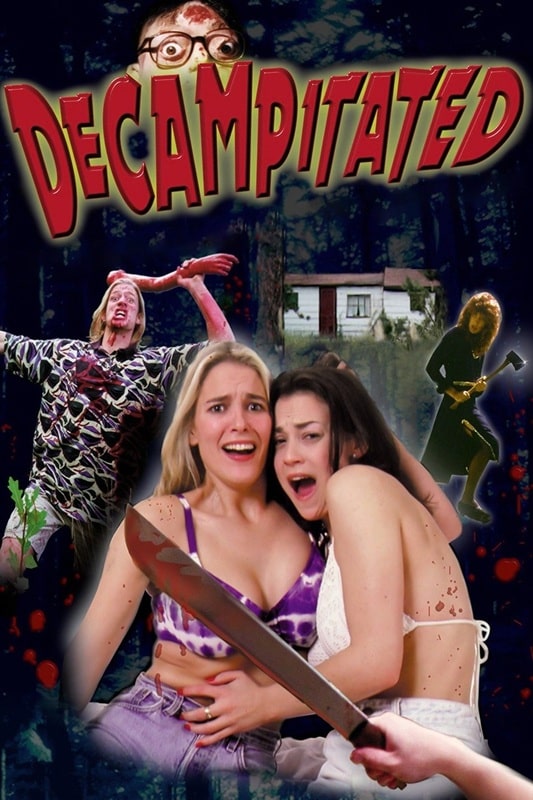
Bloody Bloody Bible Camp (Maltauro Entertainment, May 5, 2012) and
Decampitated (Troma Entertainment, 1998)
It’s 1977 (we know this because the characters are talking about Star Wars, Smokey and the Bandit, and the death of Elvis, all while sporting mustaches and/or short shorts), and the horniest bunch of Christians to ever walk God’s green earth are figuring out how to shag each other without upsetting the big man. Luckily, all this tediousness is put to a stop by a killer nun with a dagger crucifix.
Flash forward to 1984, and a new group of horny Christians are on their way to the same camp, led by ‘Father Cummings’, played by Phantasm‘s Reggie Bannister with some seriously dyed hair. As his name suggests, this isn’t as high-brow as you might expect (the mad nun’s name is Sister Chopper), and the filmmakers not only managed to adhere to the fodder-tropes for the characters, but also managed to make them hugely unlikeable.
There’s actually the germ of a decent slasher movie lost in here, but it is squandered in a maelstrom of unfunny dick jokes and a smorgasbord of hugely offensive moments, ranging from homophobic and transvestite ‘gags’, to anti-Semitism and sexual abuse. A shame really, as this has a fun (if a little hackneyed) premise. By the way, Ron Jeremy plays Jesus. JFC.
4/10
Decampitated (1998)Keeping with the campsite slasher theme, I decided to take a look at another Troma-backed effort, this one directed by Matt Cunningham. I thought I knew what I was in for after the excellent opening (but I was wrong).
The film starts with a woman fleeing for her life through the woods as she is pursued by a hunter wearing an apiary hood. She steps on a bear trap and saws her own foot off to hobble on her way. Then she steps on another trap and cuts the other foot off before dragging herself through the trees. Unfortunately, she puts her hand in a third trap and saws that off too. When her last limb is trapped, the hunter catches up to her and finishes her off. It’s absurd, mean and played for laughs, and I thought the tone would remain the same.
Sadly, the resulting film (unlikeable youths crash car, try to survive hunter) is so desperately unfunny, horribly shot (an over-reliance on fish-eye lenses) and horrendously over-acted in an effort to be ‘wacky’, that the whole thing soon becomes a chore. Plus, for the second film in a row, there is some major transvestite-bashing going on — what’s with these films? A smattering of fun, practical gore, but nothing to recommend.
4/10
Previous Murkey Movie surveys from Neil Baker include:
Tubi Dive, Part I
Tubi Dive, Part II
Tubi Dive, Part III
Tubi Dive, Part IV
Tubi Dive, Part V
What Possessed You?
Fan of the Cave Bear
There, Wolves
What a Croc
Prehistrionics
Jumping the Shark
Alien Overlords
Biggus Footus
I Like Big Bugs and I Cannot Lie
The Weird, Weird West
Warrior Women Watch-a-thon
Neil Baker’s last article for us was Part V of Tubi Dive. Neil spends his days watching dodgy movies, most of them terrible, in the hope that you might be inspired to watch them too. He is often asked why he doesn’t watch ‘proper’ films, and he honestly doesn’t have a good answer. He is an author, illustrator, teacher, and sculptor of turtle exhibits. (AprilMoonBooks.com).
Querying Writers: 14 Indispensable Resources For Success
For querying writers hoping to publish that first book, the challenge of querying for representation…
The post Querying Writers: 14 Indispensable Resources For Success appeared first on LitStack.

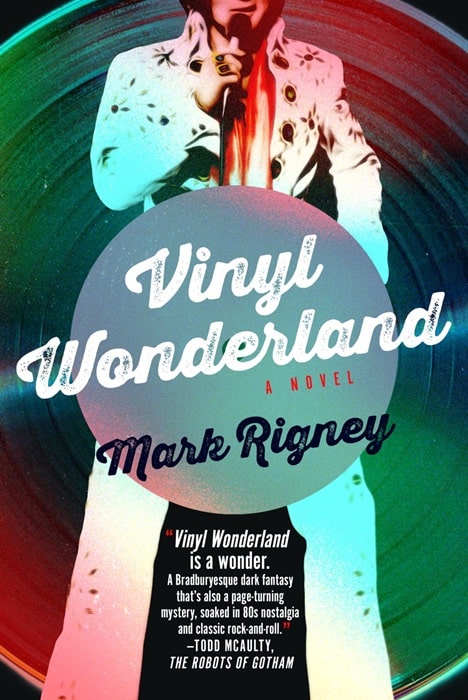


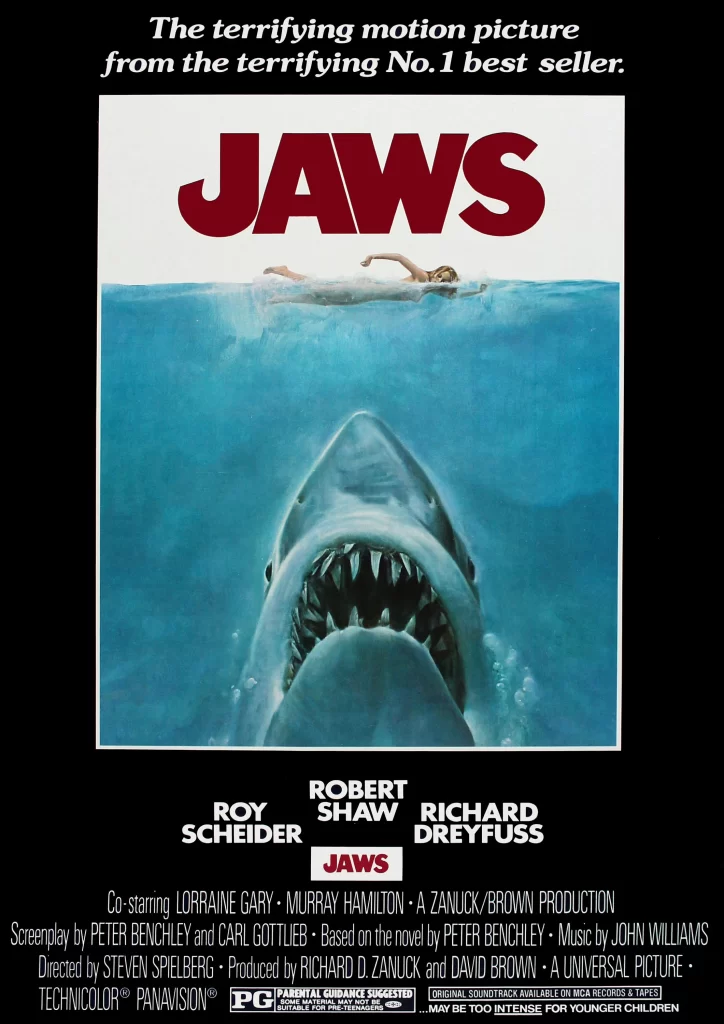
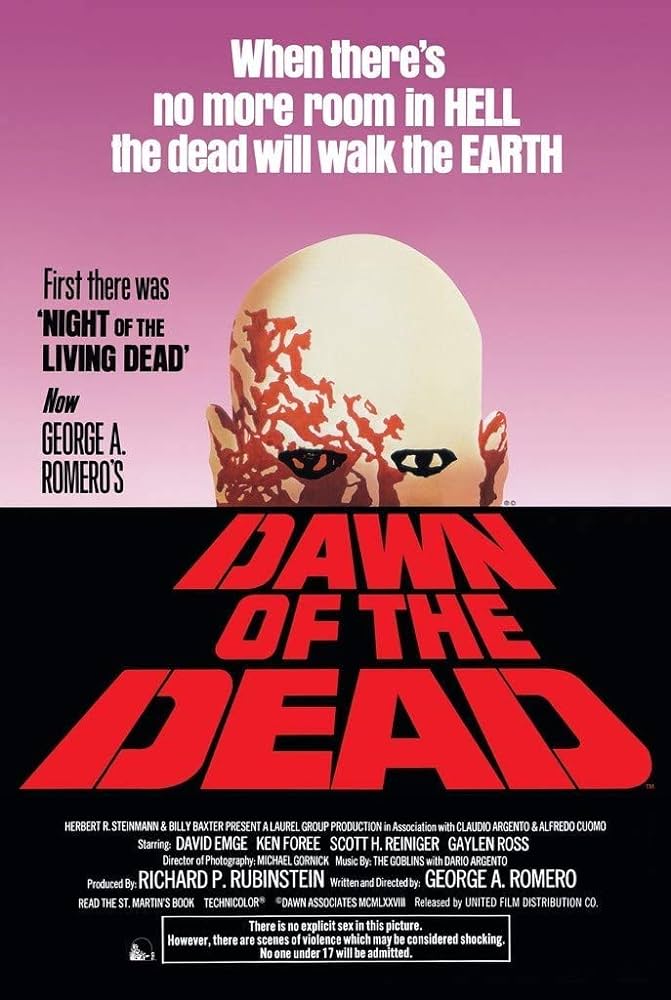
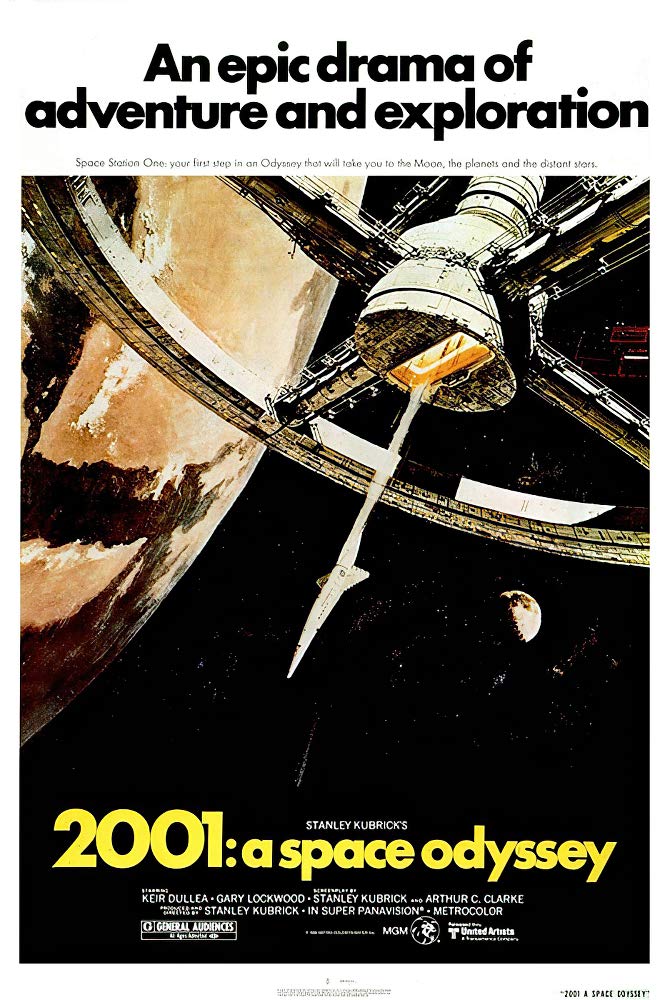
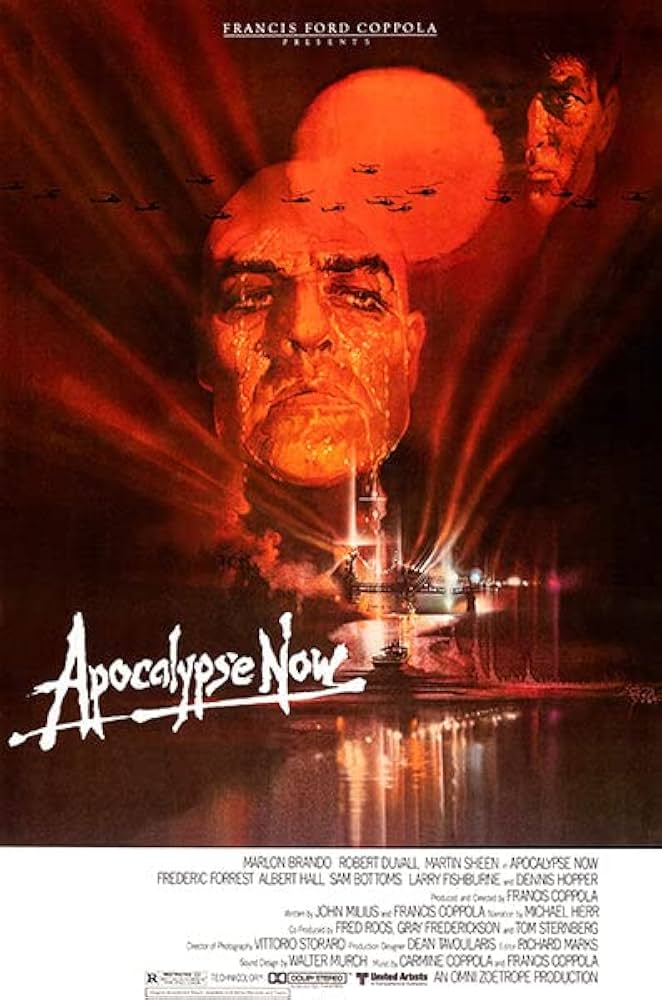
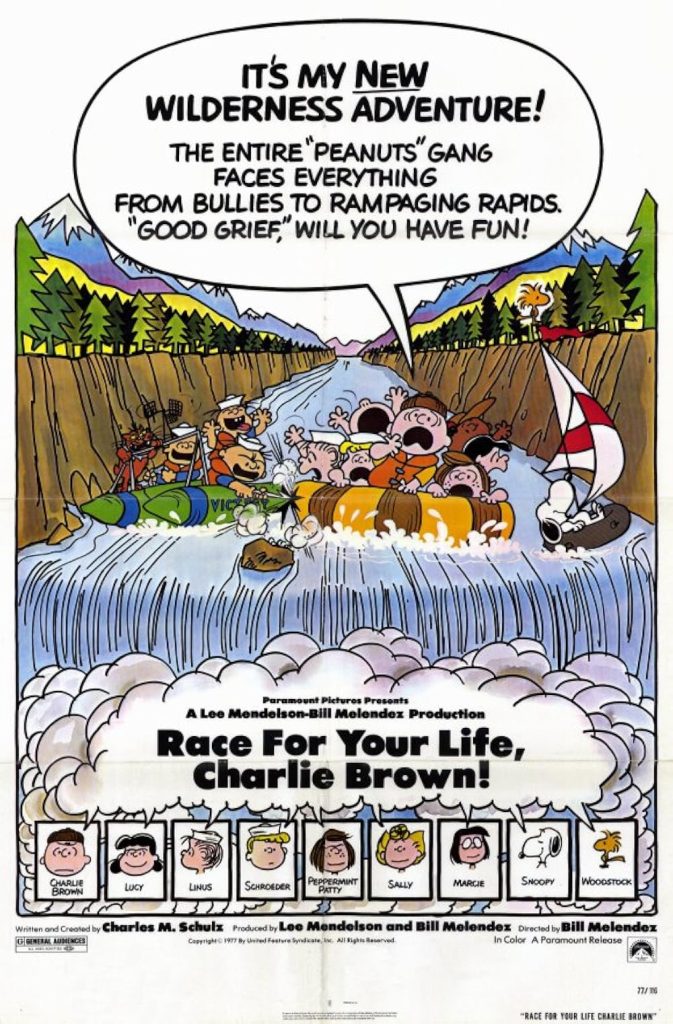



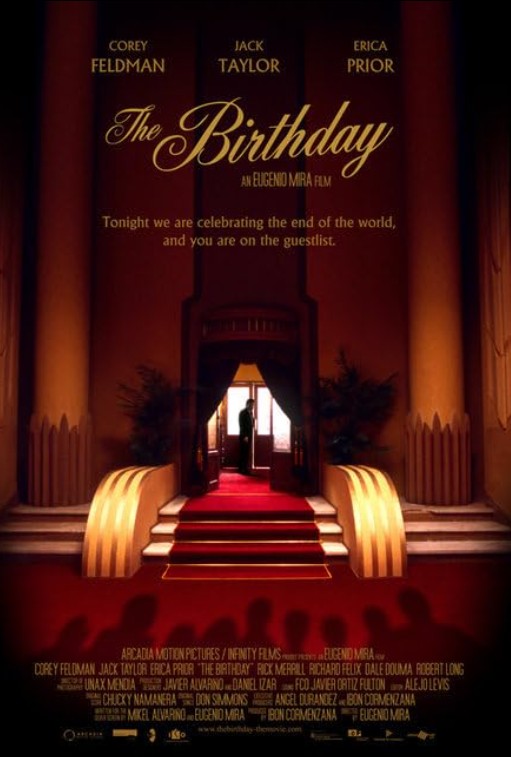
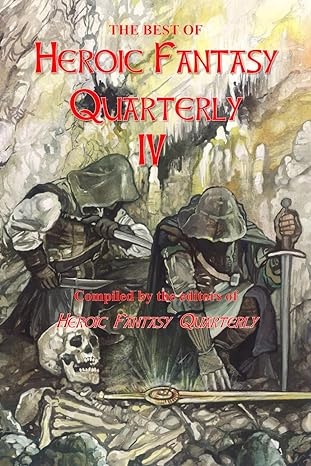
Recent comments